LinkedIn advertising
LinkedIn is the largest professional network with over 875 million members in 200 countries. Thanks to its business focus, the platform has carved out a unique position in our social media landscape. In addition to standard features like a personal profile, company page, or group, LinkedIn offers several extra, paid functionalities. These features primarily target finding and training talent or securing new clients. Perhaps you’re already familiar with LinkedIn Recruiter, LinkedIn Sales Navigator, or LinkedIn Advertising? Our articles delve into LinkedIn Advertising, the platform that allows you to advertise on LinkedIn and the LinkedIn Audience Network.Advertising on LinkedIn, in our view, is an indispensable part of any robust B2B online marketing plan. Its business-oriented focus and diverse advertising tools make it an excellent platform to capture the attention of (potential) clients. What truly sets the advertising platform apart is the business-specific characteristics you can use to tailor your audience. With attributes like job title, company name, education, or industry, you can create a highly specific target group. Curious about how to unlock the full potential of LinkedIn? Read on, and we’ll share our experiences, insights, and examples.
We share our insights and experiences with LinkedIn advertising and answer some frequently asked questions. We regularly post new information, examples, and insights. Haven’t we answered your question yet? Feel free to email us, and we’ll be delighted to add it!
What are the advantages of LinkedIn as a B2B advertising platform?
LinkedIn is globally, and especially in the Netherlands, the go-to business social media platform where your potential B2B relationships and clients seek information and inspiration. While most companies, both B2B and B2C, have a company page and use the platform to find new employees, LinkedIn advertising is much less utilized. And yet, it offers so many possibilities! With organic LinkedIn activity, you primarily remain visible within your own first-, second-, and perhaps third-degree network. With LinkedIn advertising, we achieve visibility among a larger audience. Here are our top five reasons to allocate budget and start advertising on LinkedIn this year:
- LinkedIn is the largest business social media platform
- Your competition isn’t using LinkedIn Advertising yet
- LinkedIn advertising offers a unique opportunity: measurable outbound marketing
- Advertising on LinkedIn is highly cost-efficient
- Reach precisely the right audience and get to know them better
We delve into these reasons in detail in B2B Advertising: The Advantages of LinkedIn Advertising
LinkedIn is an Indispensable Business Platform, But Why?
Why should you use LinkedIn? We often see LinkedIn being used merely as a digital Rolodex or online resume, and that’s a missed opportunity. LinkedIn is the largest professional social media platform, offering unique opportunities to connect with other professionals and businesses in your field. We’d love to share why we believe LinkedIn is a valuable social network. The most common reasons to use LinkedIn are:
- The ultimate platform for professional networking
- Searching for jobs and new colleagues
- Visibility and personal branding
- Exchanging knowledge and advice
- Business promotion
- Researching potential partners or clients
- Career development and guidance
To get more out of your LinkedIn profile, we also share a few tips:
- Optimize your profile. Think of a professional profile photo, a background image, a clear and professional headline, and an engaging summary of your expertise, professional background, skills, and goals. Don’t forget to add all your relevant work experience, education, and certifications.
- Expand your network: Start with people you already know such as colleagues, family, friends, and existing business contacts. Don’t hesitate to connect with interesting individuals you don’t know yet, but be sure to include a personal message with your invitation introducing yourself.
- Regularly share valuable content. Consider articles or updates relevant to your field, such as posts from the organization you work for. When sharing a post from your employer, don’t forget to add a brief piece of text, for example, why it’s relevant or what your contribution was. This makes it much more engaging for your followers.
- Be active: Try to log in regularly, say, once a week. Not only post your own content but also engage with others’ content and be active within your network.
Setting a goal for yourself can be helpful, such as posting one (personal) update weekly.
In our comprehensive article, we also offer tips for managers, team leaders, owners, and marketers who want to enhance LinkedIn usage within their organization. Curious about these tips and how to get your team effectively engaged with LinkedIn? Then read our article Why LinkedIn is an Indispensable B2B Platform and How to Use It.
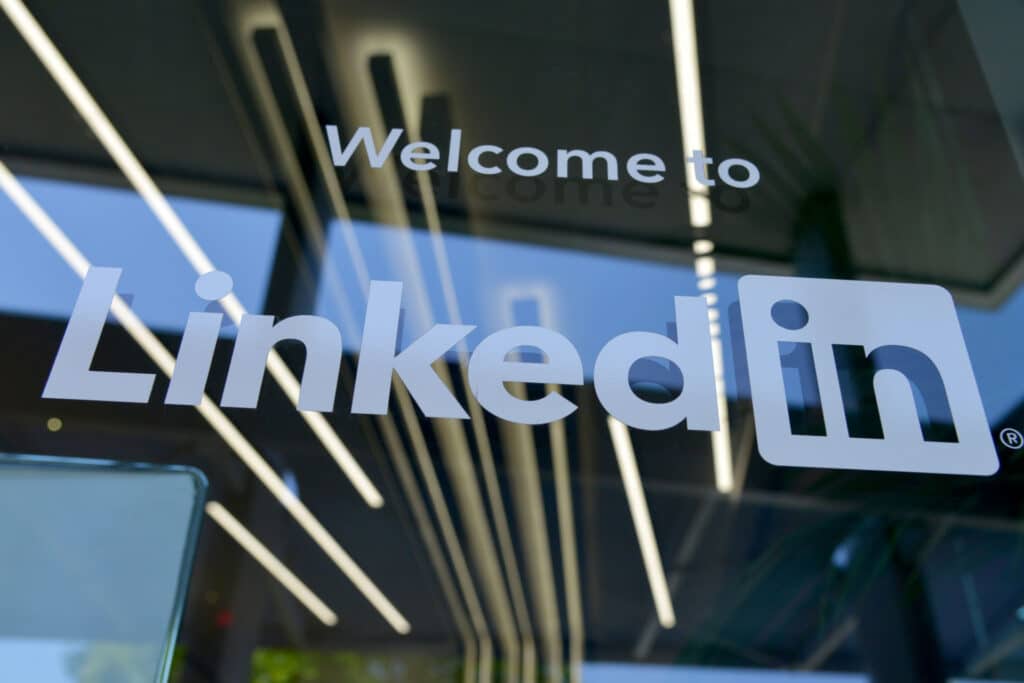
B2B LinkedIn Ad Examples
Thanks to the diverse campaign objectives, advertising options, and audience characteristics, LinkedIn can be utilized in a multitude of ways to support your marketing and sales activities. Although relatively few brands are currently leveraging LinkedIn ads, we see opportunities and positive results among our clients who have already started advertising on LinkedIn. We love to make it tangible with B2B LinkedIn ad examples. We share everything from objectives to anonymous results and compare these against our own LinkedIn Benchmark.
 Supporting Account-Based Sales with LinkedIn Campaigns
Supporting Account-Based Sales with LinkedIn Campaigns
LinkedIn is the ultimate platform to ensure visibility among the decision-makers of companies you wish to do more business with. For a Dutch company active worldwide in the high-tech and semicon industries, we regularly build and optimize campaigns to support their account-based sales teams. The advantage of this approach is the highly specific target audience, usually consisting of one or a few companies combined with the right job titles. This allows us to target our audience very precisely.
Launching a B2B Product with a LinkedIn Campaign
Last year, one of our clients, a Dutch machine manufacturer, introduced a new product offering a completely new packaging solution to both existing and potential new customers. How do you ensure that as many people as possible become acquainted with this new, innovative product?Through a masterful blend of various tools such as newsletters, articles, the renowned dealer network, and advertising on LinkedIn, we have conjured significant visibility and website traffic in a short period. This campaign was directed at retailers in both the Netherlands and Germany.
In the full article, we unveil 3 more examples of LinkedIn advertisements:
- Apex Dynamics: Building Brand Awareness via LinkedIn
- Why LinkedIn is Indispensable for Supporting Your Trade Show Visit
- Why LinkedIn is the Ultimate Social Media Platform for Lead Generation
Curious about the other examples, the results of all examples, and our comparison with our LinkedIn benchmark? Then dive into LinkedIn Advertisement Example: 5 Examples of B2B Advertising.
Do you want to learn more about leveraging LinkedIn for your business? We would love to discuss the organic and paid opportunities on LinkedIn with you!
Engagement on LinkedIn
What do you look at to determine if the content you place on LinkedIn resonates with your audience? Engagement rate is a tried-and-true metric for measuring your online performance. We favor this number because it instantly reveals your achievements, making comparisons across different periods a breeze. That’s why we incorporate the LinkedIn engagement rate in our monthly online marketing reports. However, there’s one drawback: LinkedIn only provides an engagement rate per post, not for your entire company page. We’ve solved this by investigating which engagements LinkedIn includes in its engagement rate, allowing us to apply this calculation to the company page as well. LinkedIn counts the following engagements:
- clicks
- likes
- comments
- shares
- new followers
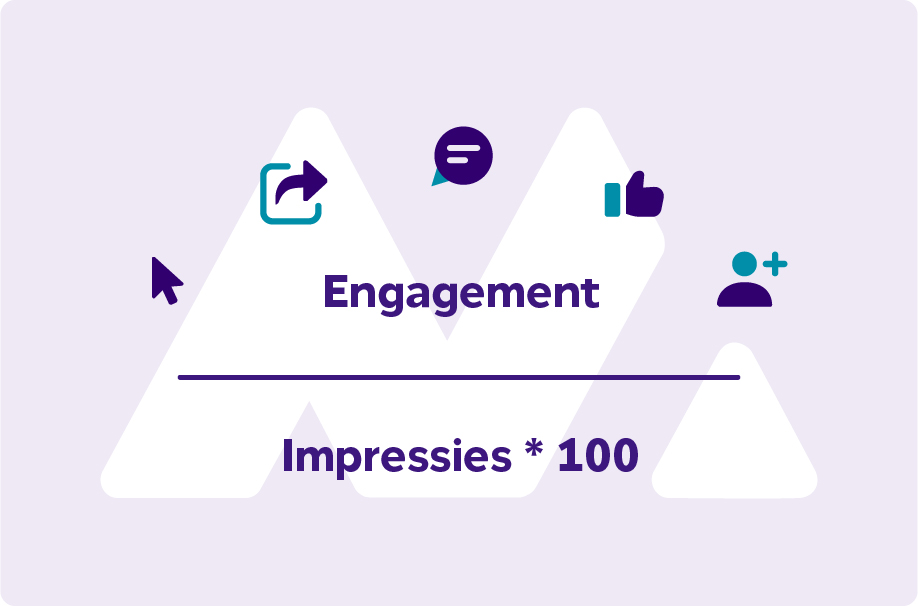 But what exactly is a good LinkedIn engagement rate? We reveal the answer to this question in the full article, Decoding LinkedIn Engagement Rate + Benchmark.
But what exactly is a good LinkedIn engagement rate? We reveal the answer to this question in the full article, Decoding LinkedIn Engagement Rate + Benchmark.
LinkedIn Advertising Strategy
What LinkedIn advertising strategy will yield the maximum results for you? To advertise effectively on LinkedIn, there’s more to consider than just creating an engaging post and boosting it with a budget. A relatively simple strategy can be set up in three steps, but what we find most important is considering your customer journey. Is your main goal to generate new leads? First, ask yourself if your target audience is ready to share personal information in exchange for an enticing download. Or perhaps they don’t know you well enough yet? Are you already known to your target audience, or do you want to introduce your brand to a new demographic? Before you begin, think about the customer journey. What does it look like, and in which phase is the group you wish to engage?
We are convinced that a good LinkedIn campaign fits seamlessly into the customer journey. That’s why, especially when lead generation is the main goal, we work with multiple campaign phases and different campaign objectives. The number of phases and the specific goals depend on your audience and objectives. In our full article, we share more about our vision on LinkedIn Advertising Strategy and guide you through the three steps to craft your own strategy:
- LinkedIn Advertising Campaign: Phases and Goals
- LinkedIn Advertising Budget
- Campaign Resources
You can find our detailed explanation in the article “LinkedIn Advertising Strategy”.
LinkedIn Benchmark: CTR, CPC, and CPM
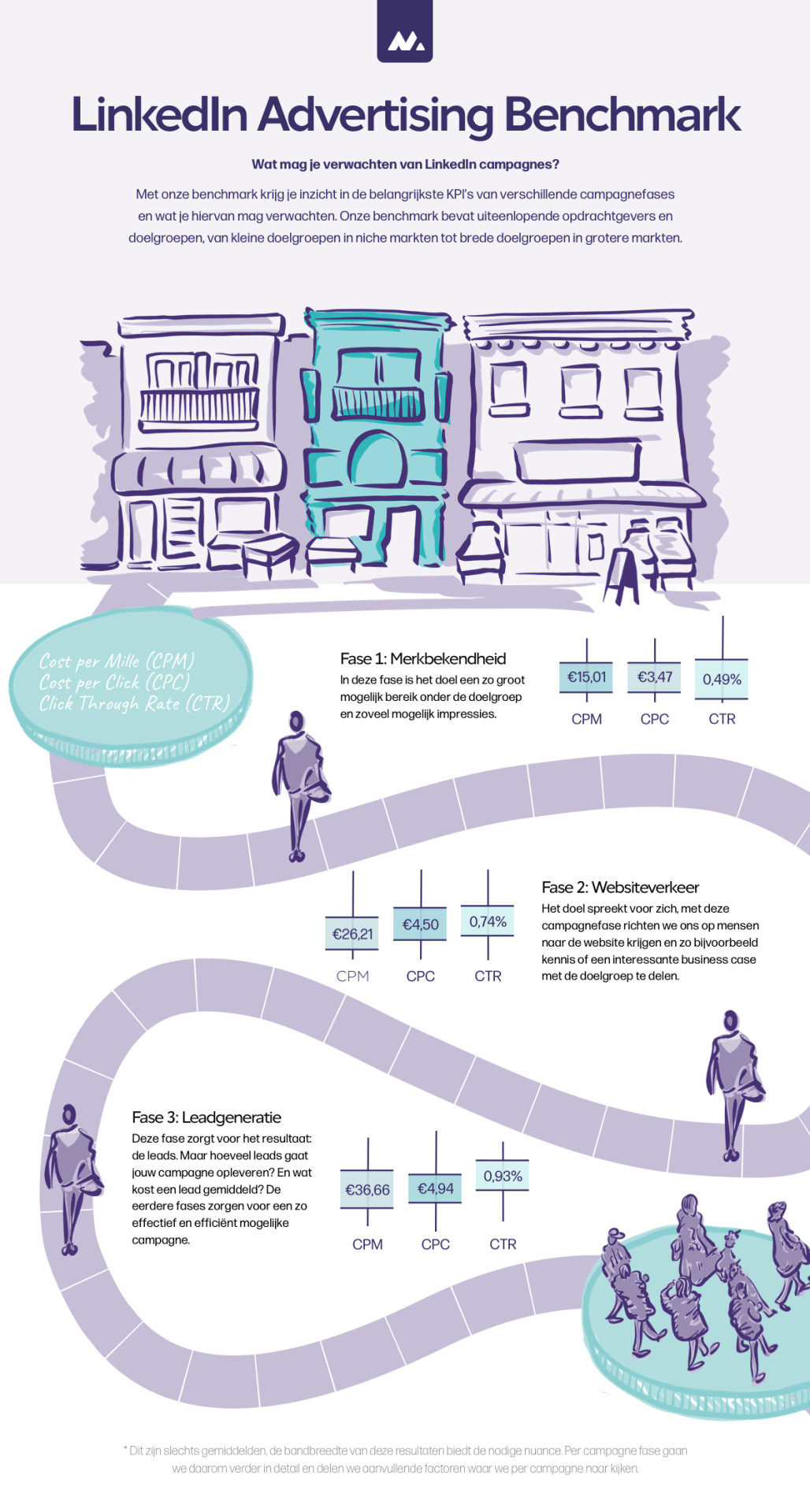 What results can you expect from a LinkedIn campaign? For a detailed answer to this question, take a look at our LinkedIn benchmark. Naturally, you can expect impressions, clicks, leads, or applicants. But how many and at what cost is a more complex question, heavily dependent on your campaign goal. With our LinkedIn benchmark, we provide answers to these questions. Our benchmark is based on campaigns we run for our clients, primarily B2B organizations active in Western Europe, who mainly seek to attract new customers through LinkedIn advertising. In this part of our benchmark, we discuss the three campaign phases we use: brand awareness, website traffic, and lead generation. We primarily focus on CTR, CPC, and CPM but also provide information on other KPIs, tailored to the campaign objective.
What results can you expect from a LinkedIn campaign? For a detailed answer to this question, take a look at our LinkedIn benchmark. Naturally, you can expect impressions, clicks, leads, or applicants. But how many and at what cost is a more complex question, heavily dependent on your campaign goal. With our LinkedIn benchmark, we provide answers to these questions. Our benchmark is based on campaigns we run for our clients, primarily B2B organizations active in Western Europe, who mainly seek to attract new customers through LinkedIn advertising. In this part of our benchmark, we discuss the three campaign phases we use: brand awareness, website traffic, and lead generation. We primarily focus on CTR, CPC, and CPM but also provide information on other KPIs, tailored to the campaign objective.
Average CTR per Campaign Phase
What percentage of your impressions leads to a click? The Click Through Rate (CTR) is a crucial KPI because it indicates the level of interest your target audience has in your ads. It’s important to note that LinkedIn doesn’t always measure CTR in the same way. In a brand awareness campaign, more clicks count towards this figure, such as a click to the company page or a like. In campaigns aimed at website traffic, only a click to the landing page counts. But what is the average CTR?
- Average CTR for brand awareness campaigns: 0.49%
- Average CTR for website traffic campaigns: 0.74%
- Average CTR for lead generation campaigns: 0.93%
Average CPC per Campaign Phase
How much do you need to spend on average to achieve a click on LinkedIn? We assess this based on the Cost per Click (CPC). From our benchmark, we derive the average CPC per campaign phase:
- Average CPC for brand awareness campaigns: €3.47
- Average CPC for website traffic campaigns: €4.50
- Average CPC for lead generation campaigns: €4.94
Average CPM per Campaign Phase
On LinkedIn, your Cost Per Mille (CPM) might be the most critical cost factor to monitor, the amount it costs to show your ad a thousand times. Unlike the number of clicks, this amount is always determined in the same way.That’s why we consider it a valuable KPI for comparing campaigns. It’s a reliable factor for basing your budgets and is often used as a (standard) bidding strategy. But what is an average LinkedIn CPM per campaign phase?
- Average CPC for brand awareness campaign: €15.01
- Average CPC for website traffic campaign: €26.21
- Average CPC for lead generation campaign: €36.66
What can you do with these averages? We hope to provide you with insights into what to expect from a LinkedIn campaign. Of course, this is just an average and can vary greatly depending on the market, target audience, and even during holiday periods. In our comprehensive article “LinkedIn benchmark results“, we delve much deeper into these KPIs. There, we not only show you the average but also highlight the range. This range offers much more nuance, allowing us to better assess whether a campaign is performing as expected. Additionally, in our detailed article, we discuss other KPIs tailored to campaign goals, such as reach, the number of impressions per LinkedIn account, and the average cost for a LinkedIn lead.
 Advertising on LinkedIn, what does it cost?
Advertising on LinkedIn, what does it cost?
Let’s get straight to the point: yes, advertising on LinkedIn is more expensive than advertising on Facebook and Instagram, and often pricier than Google Ads as well. Yet, LinkedIn remains a promising advertising platform, thanks to its unique ability to reach a B2B audience. But what should you expect when it comes to the costs of advertising on LinkedIn? We break it down by campaign objective.
- On average, with a €100 campaign budget in a brand awareness campaign, we achieve approximately 6,662 impressions among around 2,750 LinkedIn members. This means an average of 2.4 impressions per LinkedIn account.
- If the campaign objective is video views, we typically achieve about 6,125 views for a €100 campaign budget.
- Is your goal website traffic? For a €100 campaign budget, we typically achieve 3,846 impressions and 22 clicks.
- Lead generation on LinkedIn is considered a highly valuable campaign objective. On average, for a €100 campaign budget, we generate about 2.6 leads.
Not sure what your campaign objective is but still want an estimate? On average, we account for €16 per 1,000 impressions, but keep in mind that this varies significantly depending on the goal and target audience.Curious about LinkedIn advertising costs? Our comprehensive article details the various campaign objectives and their associated LinkedIn costs.
Outsourcing LinkedIn Marketing
Why consider outsourcing your LinkedIn marketing? Hiring an agency costs money, and surely you know your target audience best, right? Yet, many successful B2B companies opt to outsource their LinkedIn advertising. We explain why in our article on Outsourcing LinkedIn Marketing. Discover how it helps you maximize your budget and learn exactly how we do it. Plus, we share 16 compelling reasons why outsourcing LinkedIn Advertising is a smart move.
Understanding and Utilizing LinkedIn CPM
The concept of CPM, or Cost Per Mille, might already ring a bell. It’s a common metric across various advertising platforms. For those unfamiliar with CPM: it’s what you pay on average for every 1,000 impressions. You can assess CPM at both the campaign and ad level, making it a valuable KPI for evaluating and steering your campaigns. We dive deeper into LinkedIn CPM to help you apply it optimally.
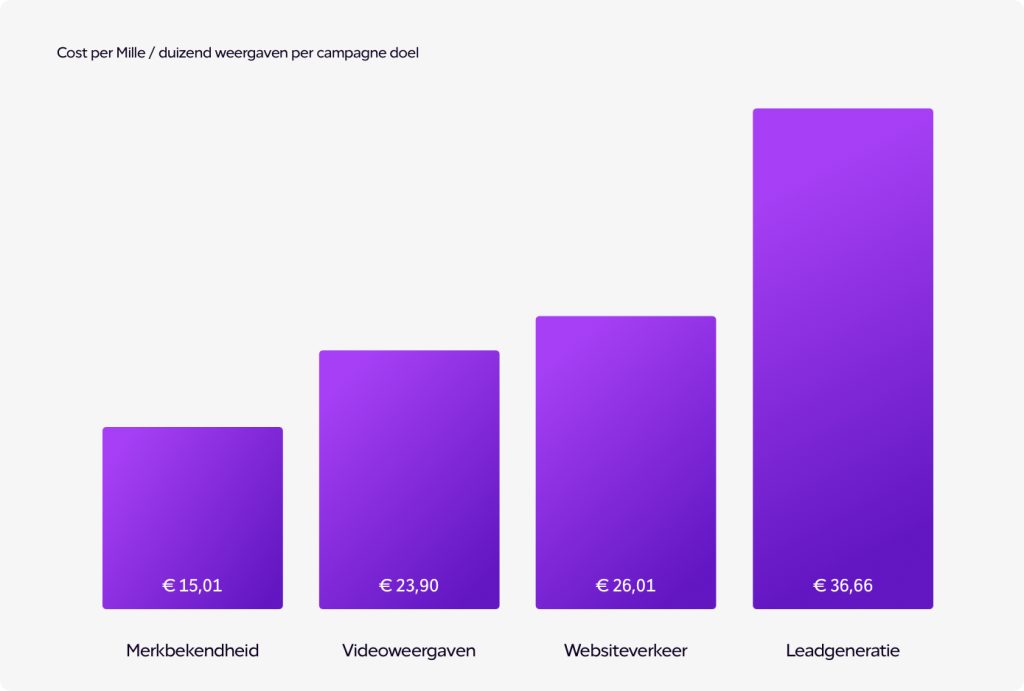 The LinkedIn CPM is a relatively straightforward KPI that you can leverage in various ways to analyze and optimize your campaigns. Here are some methods:
The LinkedIn CPM is a relatively straightforward KPI that you can leverage in various ways to analyze and optimize your campaigns. Here are some methods:
- Cost Control: A clear figure that shows you how much it costs to display your campaign or ad, making it easy to limit expenses when the CPM rises too high.
- Budget Planning: If you have an estimate of the CPM you can expect, you can use this to align your budget with the size of your target audience.
- Audience Optimization: The average CPM isn’t the same for every audience. Based on the CPM, you can make choices to approach your various audiences as cost-effectively as possible.
- Comparison with Other Platforms: CPM allows you to easily compare different advertising platforms: on which platform can you reach your audience most (cost) effectively?
- Measurability and ROI: Are the campaigns delivering the desired results? CPM is one of the factors that helps you easily determine how a campaign is performing.
- Optimization: Like other campaign KPIs, CPM is a valuable factor to optimize, improving your ad spend and campaign effectiveness.
Factors Influencing CPM
If you want to optimize LinkedIn campaigns based on your CPM, you need to understand how it works and what factors influence LinkedIn CPM. The key factors are:
- Audience
- Competition
- Seasons
- Bidding Strategy
- Ad Type
- Campaign Goal
- Ad Relevance
- Quality of the Ad Destination
- Network and Devices
In our full article on LinkedIn CPM, we explain each of these factors in detail and offer tips on how to leverage these factors for a lower CPM.
LinkedIn CPM is Higher Compared to Other Platforms
Indeed, LinkedIn is a relatively expensive advertising platform. But the real question is: are the higher costs worth it? This, of course, varies greatly depending on the company, goal, service or product, and target audience.In our comprehensive article “LinkedIn CPM: A Complete Guide“, we eagerly explain why B2B-oriented organizations should not overlook LinkedIn as an advertising platform, despite the higher CPM.
Getting Started with LinkedIn Advertising
Want to start advertising on LinkedIn but unsure where to begin? Let us guide you with the following steps:
- Create a LinkedIn advertising account
- Determine ad format: campaign goal and message
- Assemble your target audience
- Set your budget
- LinkedIn Campaign Manager
- LinkedIn Insight Tag
- Launch your campaign
- Optimize your LinkedIn campaign
We’ll briefly highlight the key steps. In the full article “Advertising on LinkedIn“, each step is thoroughly detailed.
Determining Ad Format
What message do you want to convey to your audience? Consider the imagery and text, as well as your campaign’s goal. The campaign goal greatly influences your ads, as the advertising options vary per goal. The table below provides a handy overview of the possible ads per campaign goal.
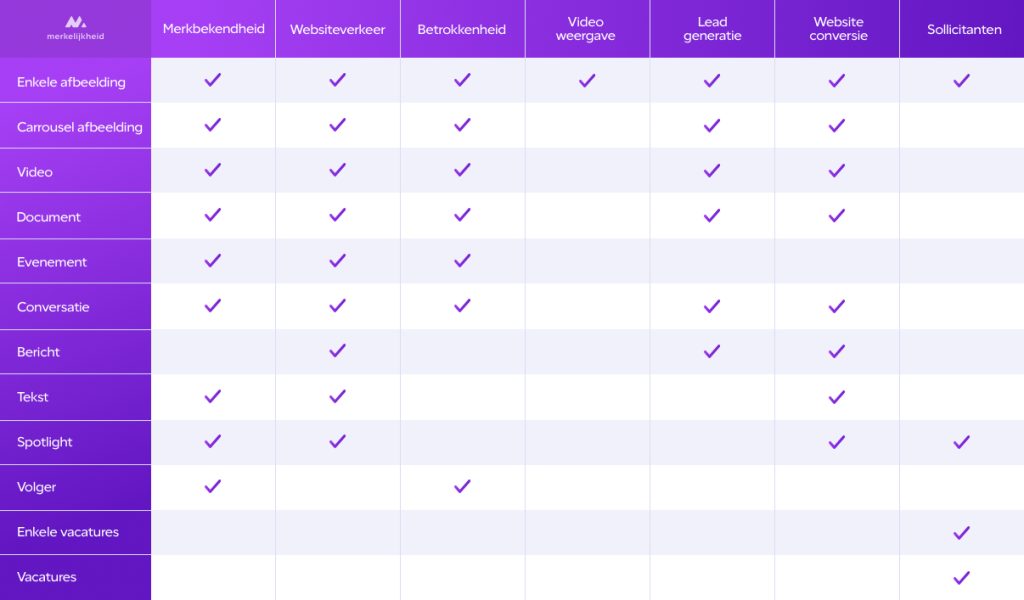
Assembling Your Target Audience on LinkedIn
On LinkedIn, you can set up your target audience in several ways. Start with the language and geographical area. Only one language is possible per campaign, but geographical areas can be mixed. Then, you can assemble your audience based on various business attributes such as the industry they work in, company size, roles within the target audience, or the education they’ve completed.Additionally, LinkedIn offers various possibilities to assemble target audiences beyond your network, such as based on your website traffic, an offline event, or your mailing list.
Determining Your Budget
Four factors influence your budget:
- Audience size
- Number of ad phases
- Ad format
- Duration
When setting a budget for your LinkedIn campaign, don’t just look at your available resources—strive to make the best possible estimate of what this campaign truly needs. Your campaign will significantly improve when you align your budget with your audience size. We prefer achieving sufficient visibility within a smaller audience over casting a wide net with less impact on a larger audience. As with any form of advertising, on LinkedIn too, brand and campaign recognition requires repetition.
Ask yourself how many ad phases you need to effectively convey your message, which campaign goals align with this, and how long you wish to run the campaign. Moreover, it’s important to note that LinkedIn requires a minimum ad budget of €10 per day.
Optimizing Your Campaign
Once your campaign is underway, your journey is far from over! It’s time to harness the data from your campaign to optimize it. LinkedIn provides insights into metrics such as impressions, reach, CPM, CTR, and CPC. Additionally, the demographic report is highly valuable: who are you currently reaching, and how well does this align with the audience you envisioned?Are you diving into optimizing your campaign? Make sure to answer these questions for yourself:
- How many people are you reaching, and does this align with the expectations of your target audience?
- What is the CPM, and does it match your expectations and budget?
- What are the engagement levels and CTR?
- How often does one person see an ad on average?
- How is the campaign distributed among your target audience?
Curious about the complete step-by-step plan to launch your LinkedIn campaign, or want to read more about the steps mentioned above? Check out our full article on advertising on LinkedIn.
LinkedIn Ad Format
The ideal format for LinkedIn ads is 1200 x 627 pixels, with an aspect ratio of 1.91:1. This format is widely used for both the popular ‘Single Image’ ads and ‘Promoted Post.’ For guaranteed sharp display, we recommend uploading your image at 2400 x 1254 pixels.
But that’s probably not all. What other formats should you be familiar with before you start creating your new LinkedIn Advertising campaign? In our FAQ article on LinkedIn Ad Format, we list the most important ads for you.
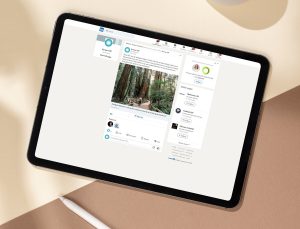 Supporting Account-Based Sales with LinkedIn Campaigns
Supporting Account-Based Sales with LinkedIn Campaigns